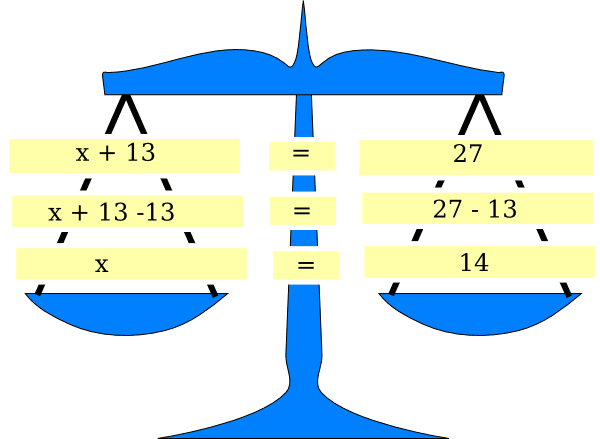An equation has two expressions, separated by an equal sign:
(expression) = (expression)
In any operation, the two expressions will remain equal.

To solve an equation we can:
- Add the same quantity to both sides
- Subtract the same quantity from both sides
- Multiply both sides by the same number
- Divide both sides by the same number
For example, let’s take the simple example 2 + 2 = 4.
If we add 6 to both sides with get 4 + 2 + 2 = 4 + 4. The answer is 8.
Now, you don’t usually work with equations where all the numbers are known, but rather where one is unknown. We call this a variable. Your job is to solve the variable to make the equation equal on both sides.
Often the variable is given a letter: x = something.
Let’s solve the equation: x – 2 = 3
We can write this equation as x + (-2) = 3
Adding two positives to both sides will cancel the two negatives on the left hand side:
x + (-2) + 2 = 3 + 2
The two positives and the two negatives cancel each other out: (-2) + 2 is 0.
So x = 5.
Let’s try this example: 3x – 6 = 9.
Add 6 to both sides: 3x – 6 + 6 = 9 + 6
The six negatives and the six positives cancel each other out on the left-hand side, so:
3x = 9 + 6
Now we want to find out what x is.
Divide by 3 on both sides to work out what x is:
3x / 3 = 15 / 3
The answer is x = 5.
For more practice, we sell a workbook on linear equations in our bookstore.

